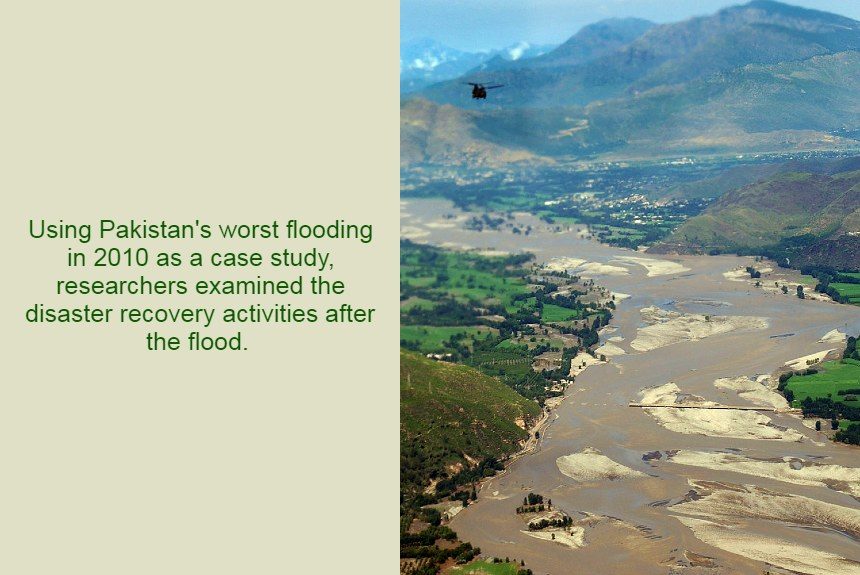In 2010, severe flooding hit Pakistan, inundating about 37 thousand square kilometres of the nation’s area.
Over 20 million people were affected, more than those affected by the 2004 Indian Ocean Tsunami, 2005 Cyclone Katrina, or the 2008 Cyclone Nargis in Myanmar.
The total loss from these massive floods totalled US$10.4 billion, or 5.7% of Pakistan’s GDP. After the flooding event, rescue and relief activities lasted up to 8 months, beginning in July 2010 and ending in March 2011.
Sindh province was one of the most affected by this event; out of the 20 million affected, 7.3 million residents were from the Sindh province. Sadly for them, the post-recovery after this unprecedented flood stopped at the rescue and relief phase.
According to the study, no recovery and reconstruction authority was established in the province after the flooding incident—a task that belongs to Pakistan’s National Disaster Management Authority (NDMA).
Although the institution was lauded for its well-coordinated emergency phase efforts, the province lacked recovery and reconstruction phase efforts.
Using Pakistan’s worst flooding in 2010 as a case study, researchers examined the disaster recovery activities after the flood. They highlighted the factors that hinder the transitions to recovery phases in Pakistan, which may also be true in other developing countries.
The three Post-Disaster Recovery (PDR) phases in the study are the following –
- relief phase, which is meeting the most immediate needs of the community following a disaster,
- rehabilitation phase or the restoration of basic services and facilities to make communities and societies function; this includes providing temporary housing or shelter, mass feeding, treatment of the injured, etc. and lastly,
- The recovery phase is also termed the long-term phase, wherein major reconstruction, development, and capacity building occur through structural or non-structural measures.
Other PDR phase models, like the one proposed by Haast and others, show four overlapping phases—emergency, restoration, reconstruction 1, and reconstruction 2—similar to the UNDRR model. The study thoroughly discusses these PDR models.
According to the study, Post-Disaster Recovery (PDR) in developing countries is limited to relief and rescue operations, failing to transition to subsequent phases like rehabilitation, restoration, and recovery, which lead to a community’s full and long-term recovery.
The study finds that Sindh’s post-disaster recovery after the 2010 floods failed to transition to a long-term recovery phase.
The factors that hindered these transitions include the following:
- The lack of community-level involvement – the state and relevant institutions failed to place communities at the centre of the recovery process,
- Inadequate coping capacity, resources and skills of both the community and local administration, which will impede their long-term recovery actions,
- Absence of any recovery and reconstruction authority after the flood
- No coherence or coordination in the PDR activities among stakeholders led to confusion between stakeholders and hindered the smooth transition of recovery and
- Lack of information and data among local administration and stakeholders led to politically motivating projects and aid distributions.
The study can help policymakers and disaster management practitioners plan and implement effective PDR strategies, especially in developing countries that are most vulnerable to climate-related and natural disasters, by better understanding the smooth transition of the various phases of the PDR.
To read the entire study, click on the link below.
Source
Ali, R.A., Mannakkara, S. and Wilkinson, S. (2020), “Factors affecting successful transition between post-disaster recovery phases: a case study of 2010 floods in Sindh, Pakistan”, International Journal of Disaster Resilience in the Built Environment, Vol. 11 No. 5, pp. 597-614. https://doi.org/10.1108/IJDRBE-03-2020-0016
PHOTO CREDIT: By DVIDSHUB – Pakistan relief efforts continue defense.gov, Public Domain, https://commons.wikimedia.org/w/index.php?curid=11235502



Leave a Reply